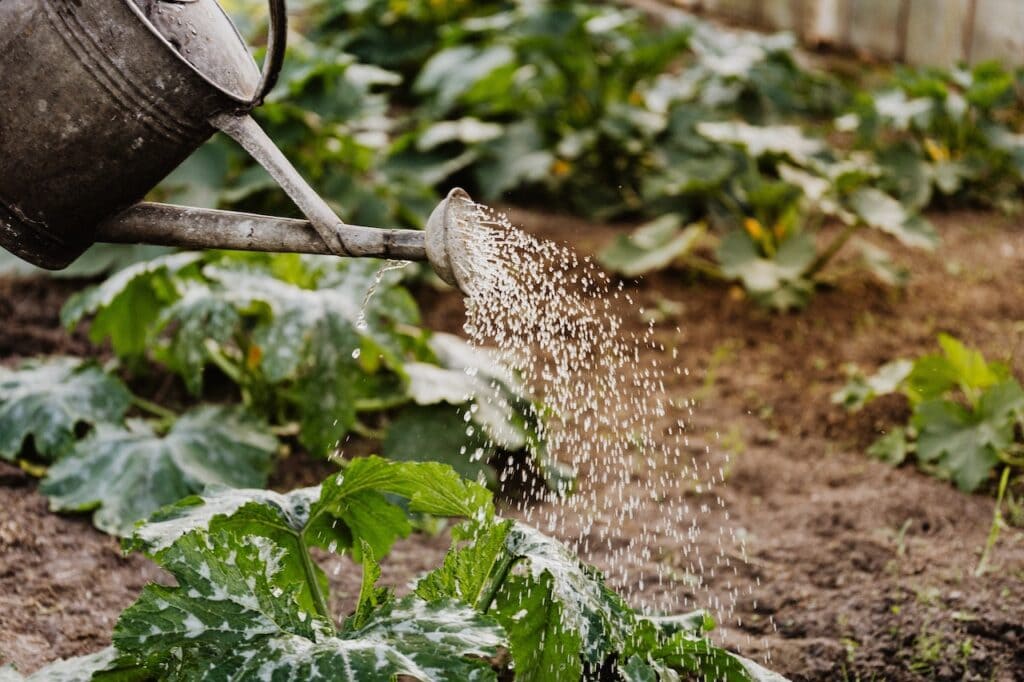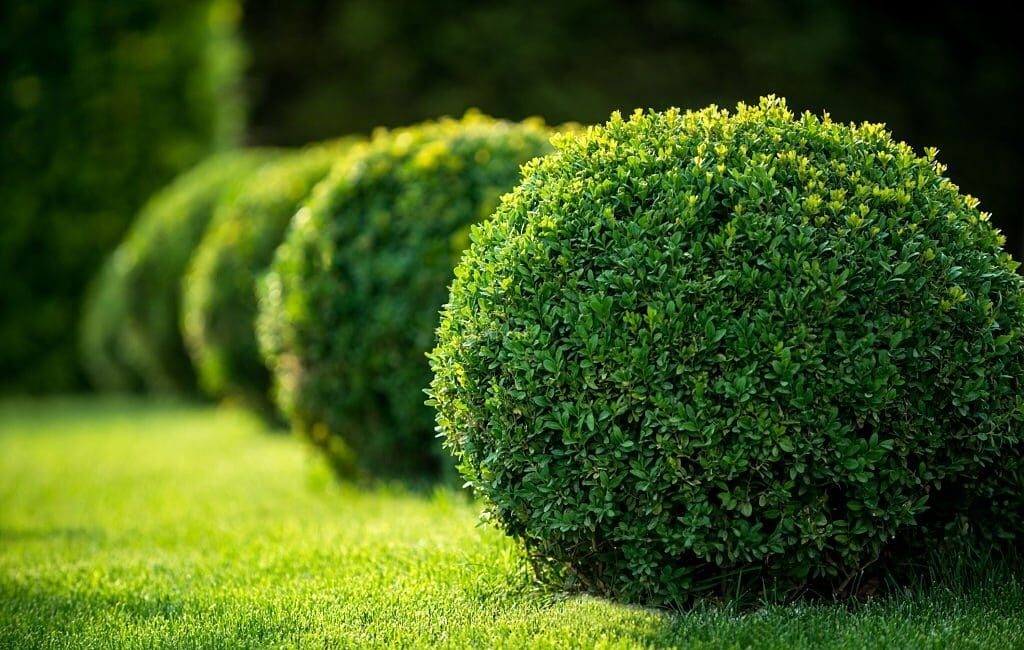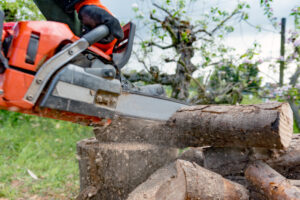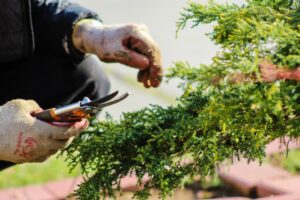To add beauty and value to your property, landscaping is an excellent investment. But, not all ideas for landscaping are made equal, and certain ones can lead to more maintenance than others. In this article, we will talk about some typical landscaping blunders that can lead to increased upkeep and maintenance, as well as provide some advice on how to prevent such mistakes in the future.
Typical mistakes
Overplanting
Overplanting is one of the most common errors that individuals make while they are working on the landscaping of their yards. It may be tempting to fill every available space with plants, trees, and bushes, but doing so may lead to an increase in the required maintenance. Plants that have been allowed to become overgrown can rapidly become unsightly and difficult to maintain. To keep these plants under control, periodic pruning and trimming are required. In addition, plants that are crammed together may contend with one another for resources such as water and nutrients, which may result in slower growth and a landscape that could be more robust and healthier.
Before you plant anything, it is essential to thoroughly consider the style of your landscaping, as this will help you avoid overplanting. Think about things like the eventual size of the plants when they are fully grown, how much space between them they need, and how they will appear and behave in your yard as a group. When it comes to landscaping, it's important to keep in mind that less is frequently more.
Ignoring the Climate
Ignoring the climate is another typical oversight that people make while designing their outside spaces. It is essential to select plants that are well-suited to the climate and soil conditions of your location, as different types of plants flourish in a variety of settings. For instance, if you live in a dry area and plant vegetation that requires a lot of water, you will have to water it frequently, which may be both time-consuming and expensive. Conversely, when heat-loving plants are placed at a too-cold temperature for them, the effect might be stunted development and a shortened lifetime.
Researching the kinds of plants that are indigenous to your area or that have successfully adapted to the conditions of your climate is the best way to steer clear of making this error. These plants will have a greater capacity to resist the weather conditions in your region, require less maintenance, and look better when added to your landscape.
Not Considering Maintenance Needs
While planning your landscaping, it is essential to consider the upkeep requirements of each plant and feature. For instance, trees could need to have their branches pruned on a regular basis, while flower beds can require regular weeding and mulching. Likewise, fountains and other water features need to be cleaned on a routine basis, while hardscaping elements such as stone patios and walks can require an occasional pressure washing.
Choose landscaping components that are suitable for your lifestyle and can be easily maintained to avoid making this common error. If you are pressed for time, select low-maintenance plants and features that need only a small amount of care and attention. On the other hand, if you like to spend time in your yard and have the time to devote to upkeep, you should select plants and features that require a higher level of maintenance.
Planting Invasive Species
The introduction of invasive species into an ecosystem is a grave error that, in the long run, may result in substantial maintenance challenges. It takes little time for invasive plants to take over an entire landscape, squeezing out other types of vegetation and competing for the same resources. They are also capable of rapidly propagating, making them difficult to contain and potentially detrimental to the environment in the surrounding area.
Before adding any new species to your environment, you should conduct some research so that you can avoid making the same error again. Seek for plants that are either indigenous to the region where you live or have a track record of not becoming invasive in other areas. Talk to a local expert in gardening or landscaping if you are still determining whether or not a specific plant is invasive. They will be able to help you determine this.
Neglecting Soil Health
A healthy landscape must have healthy soil as its foundation. Nevertheless, a lot of people need to pay more attention to the condition of their soil, which can result in poor plant development and increased upkeep requirements. In addition, inadequate soil health can lead to nutrient deficits, drainage problems, and an increased risk of infestation by unwanted organisms such as pests and diseases.
It is essential to perform routine tests on the nutrient content and pH levels of your soil to prevent this error. Based on the findings, you may need to modify the soil by adding fertiliser, compost, or some other type of amendment to improve the soil's health. In addition, it is essential to refrain from fertilising your plants excessively since this can result in an imbalance of nutrients and cause harm to your crops.
Choosing the Wrong Plants for the Location
Another typical oversight that people make when landscaping is selecting inappropriate plants for the area, which can result in a greater amount of upkeep. Some plants can only be grown in environments that fulfil their requirements for sunlight, soil composition, and moisture levels. If you select the right plants for a specific site, you may have better growth, an increased vulnerability to pests and diseases, and an increase in the required amount of upkeep.
It is crucial to choose plants that are well-suited to the growing conditions of your yard in order to avoid making the mistake that was just described. Think about things like the quantity of sunlight the place gets, the kind of soil it has, and how much moisture there is in it. Go to a local gardening or landscaping expert if you need clarification on which plants might thrive in a specific area. They will be able to advise you on the best options.
What plants are better to choose for landscaping to avoid mistakes?
When you are selecting plants for your landscaping, it is essential to choose ones that are well-suited to your climate, soil type, and the amount of light exposure they receive. The following is a list of plant selections that can assist you in avoiding some frequent mistakes that are made in landscaping:
- Native Plants - Native plants thrive in your region because they are well-adapted to the weather and soil conditions there. As a result, they are more resistant to environmental stresses and are less likely to be affected by disease or pests. They are also easier to care for than plants that were brought in from elsewhere.
- Low-Maintenance Perennials - Plants that live for more than one year are known as perennials. Because they do not need to be replanted as frequently, this can save you both time and money. Coneflowers, black-eyed Susans, and daylilies are low-maintenance perennials that you should look for.
- Ground Covers - Plants that grow low to the ground are known as ground covers. These plants can suppress the growth of weeds and protect the soil from erosion. Creeping phlox, ajuga, and sedum are three plants that make excellent choices for use as ground cover.
- Drought-Tolerant Plants - Drought-tolerant Plants are able to survive with less water than other types of plants, which means they take less time and effort to be water. Lavender, yarrow, and similar plants are good selections for drought-resistant landscaping.
- Slow-Growing Trees - Trees are a wonderful addition to any outdoor space, yet they can become a maintenance nightmare if they expand too rapidly and require regular trimming. Keep an eye out for trees that have a modest growth rate, such as dogwoods, Japanese maples, and redbuds.
You may cut down on the amount of upkeep your landscaping requires by selecting plants that are well-suited to your particular requirements and the conditions in which they will develop. This will allow you to keep your yard looking lovely and in good health. Getting advice from an expert gardener or landscaper on which plants would work best in your yard is another option for improving its appearance.
Poor Drainage
Another common landscaping mistake that might result in additional upkeep is one that needs better drainage. Soil that becomes waterlogged can smother plant roots, resulting in stunted plant growth and an increased risk of attack by various diseases and insects. In addition, areas of stagnant water can serve as a fertile breeding ground for mosquitoes and other pesky insects.
It is essential to ensure that your yard has adequate drainage in order to avoid problems caused by improper drainage. This may require grading your yard to create a slope away from your home, constructing drainage systems, or growing water-loving plants in low-lying regions. There are a variety of options available to you.
Neglecting Pruning and Trimming
The majority of individuals need to remember to prune and trim their plants, which can result in overgrown plants, obscured vistas, and higher maintenance requirements. However, frequent pruning and trimming can encourage healthy development, enhance the look of your landscaping, and protect your home or other property from being damaged.
It is imperative that you prune and trim your plants, shrubs, and trees on a regular basis in order to prevent making this error. This may involve removing branches that are unhealthy or have died, trimming plants to maintain the size and form that is wanted, and clearing away any overgrowth that is blocking vistas or posing a safety risk.
Not Considering Maintenance Requirements
One more frequent error made in landscaping is failing to take into account the varying requirements for upkeep that different plants and landscaping components have. For example, while some plants need to be pruned, fertilised and watered on a regular basis, others require very little care. In a similar vein, certain elements of landscaping, such as ponds and waterfalls, need to be maintained on a consistent basis in order to keep them clean and in working order.
Before combining different plants and landscaping features into your design, it is essential to think about the upkeep that each one will demand in order to avoid making the error that was just described. Choose plants and features for your yard that are well-suited to your way of life and the amount of time you have available for care.

Forgetting About Seasonal Changes
When planning their landscaping, many people need to take into account the changes that occur over the seasons. The time of year can significantly impact the development habits of plants as well as the care and attention they require. Seasonal adjustments can need to be made to certain aspects of the property, such as the outdoor lighting or the irrigation systems.
It is essential to plan your landscaping with seasonal shifts in mind in order to avoid making the error I just described. Think about how the plants and features in your yard will look and how they will operate throughout the year, and make plans for any alterations or care that may be required.
Using Invasive Plants
Using invasive species in your landscaping can quickly become a headache in terms of upkeep. Invasive plants are not local to your region and may readily expand and take over, suffocating native plants and causing a variety of other difficulties for your yard. Invasive plants can be identified by their ability to spread and take over rapidly.
It is vital to choose plants that are native to your area so that you can avoid making this error. These plants will do well in the environment and growing circumstances unique to your region. To find out which kinds of vegetation might do well in your garden or yard, it is important to confer with a local gardening or landscaping expert.
Overlooking Safety Hazards
In conclusion, addressing potential dangers might lead to significant difficulties in terms of care for your landscaping. For example, a potential safety risk might be posed by trees or branches that are situated too close to your house or the power lines, and trips and falls can be caused by uneven walkways and paths that have not been properly maintained.
It is essential to perform routine checks of your landscaping to identify any potential problems to reduce the risk of injury. For example, cut back any trees or branches encroaching on your property or the power lines, and keep footpaths and walkways in good repair by ensuring they are level and clear of obstructions.
By avoiding making these typical errors in landscaping, you may cut down on the amount of upkeep and care required to keep your yard attractive and thriving. You can have a low-maintenance landscape that enhances the attractiveness of your home as well as the value of your property with just a little bit of preparation and attention to detail.
Not Considering Sun Exposure
While planning their landscape, many people need to pay more attention to considering solar exposure. There are wide varieties of plants, each of which has its own specific requirements for the amount of sun exposure it receives. If you plant the right sort of plant in the right area, you may have better growth and higher upkeep requirements.
It is crucial to choose plants that are well-suited to the quantity of sun exposure in each section of your yard in order to avoid making the mistake that was just described. Think about things like the angle at which the sun rises and sets, as well as the amount of shade that can be cast by neighbouring buildings or trees.
Ignoring Drainage Issues
If you ignore drainage problems in your yard, you could end up with some severe maintenance troubles. In addition, inadequate drainage can result in some problems, including damage caused by water, soil erosion, and plant diseases, all of which can be difficult and expensive to remedy.
It is essential to ensure that your landscaping has adequate drainage in order to prevent making this error. This may need the installation of drainage systems, the grading of your yard to redirect the flow of water or the use of plants that can thrive in frequently wet conditions.
Choosing the Wrong Size Plants
When designing their landscape, people frequently select plants of the incorrect size, which is another common mistake. While planting plants that are too huge for the space can lead to overcrowding, planting plants that are too tiny can result in gaps in your landscaping that require additional work to cover. Overcrowding can be avoided by growing plants that are the appropriate size for the location.
You must select plants that are well-suited to the size of your yard and the space that you have available for planting if you want to avoid making this error. Talk to an expert in gardening or landscaping to get advice on which kinds of plants work best in your garden, given your particular circumstances.
Not Planning for Irrigation
If you do not adequately plan for irrigation, it could lead to a greater demand for landscaping maintenance. In addition, if you do not correctly irrigate your plants, they may not receive the sufficient amount of water they require to flourish. This can result in stunted development and an increased risk of infestation by undesired organisms such as insects and illnesses.
Suppose you want to avoid making the mistake that I just mentioned. In that case, it is absolutely necessary to incorporate watering arrangements into the design of your landscape while you are building it. Either construct a sprinkler system or install a drip irrigation system if you want to ensure that your plants receive the amount of water they need to thrive. Sprinkler systems are easier to maintain than drip irrigation systems.

Failing to Consider Aesthetics
Aesthetics are just as important to the success of your landscaping as more practical aspects, such as drainage and irrigation, which need to be carefully studied to get the desired results. Aesthetics are just as important to the success of your landscaping as drainage and irrigation. If you do not take into consideration how your yard should look, it can end up looking disorganised and unpleasant. This is a potential outcome. In the case that this occurs, you will be required to perform additional maintenance in order to resolve the issue.
To avoid making the mistake that I just went over, it is essential to plan the layout of your landscaping with the overall attractiveness of your yard in mind. This will help you avoid making the mistake that I just went over. Because of this, you won't commit the error I just pointed out to you. Select plants and other components for your yard that work well together aesthetically and contribute to creating a uniform appearance over the whole area.
Neglecting Lawn Care
Many people need to pay more attention to their obligations for lawn maintenance, which can result in a messy and unwelcoming yard for visitors. Unfortunately, this is a frequent mistake that many people need to correct. In order to preserve a lawn in excellent health and attractive appearance, it is essential to do normal lawn maintenance, such as mowing, fertilising, and watering the grass on a regular basis.
If you want to avoid making this mistake, you must establish a routine to maintain your lawn. This routine should include mowing, fertilising, and watering the grass on an as-needed basis. If you don't have the time or the expertise to take care of your grass alone, consider hiring a lawn care service instead.
Failing to Establish Boundaries
Last but not least, if you need to identify the boundaries of your property clearly, this could result in an increase in the amount of maintenance your landscape requires. Your plants and other parts of your landscape, if there aren't any clear borders, can encroach on regions that aren't their good home, such as your neighbour's yard or a public sidewalk. If there are obvious borders, this won't happen.
If you want to avoid making this common mistake, it is vital to draw up defined borders for your landscaping. This will help keep your plants and grass in their proper places. Installing fencing, planting hedges, or making use of one of the many other available landscape features are all excellent ways to demarcate the boundaries of your yard while also preventing encroachment on the land of your neighbours.
Conclusion
In conclusion, although landscaping can add beauty and value to your home, it is crucial to avoid making common mistakes that can result in increased costs associated with maintaining landscaping and increased costs associated with landscaping overall. However, if you take the time to plan out the design of your landscaping properly, choose the appropriate plants based on your geographical region and climate, and take care of the soil and drainage, you can have a beautiful landscape that requires very little maintenance for many years to come. Again, this is possible if you plan out the design of your landscaping.
Frequently Asked Questions
How can improper use of fertilizers and pesticides lead to higher maintenance needs in landscaping?
Improper use of fertilizers and pesticides can result in increased maintenance requirements and potential harm to your landscape. Some ways this can occur include:
- Over-fertilization: Applying excessive amounts of fertilizer can lead to nutrient imbalances, burning of plant roots, and increased weed growth, requiring corrective actions such as leaching excess nutrients or increased weed control efforts.
- Contamination and damage: Misapplication of pesticides can result in unintended damage to desirable plants, beneficial insects, or even contamination of water sources, leading to additional maintenance tasks and potential environmental consequences.
- Development of resistance: Improper use of pesticides, such as using the same product repeatedly or inappropriately timing applications, can contribute to pest or weed resistance, making it more challenging to control
Can improper hardscape installation contribute to increased maintenance in a landscape?
Yes, improper installation of hardscape elements can lead to maintenance issues. Some examples include:
- Poorly levelled surfaces: If hardscape features such as patios, pathways, or retaining walls are not properly levelled during installation, water can accumulate or flow incorrectly, resulting in drainage problems or erosion.
- Insufficient base preparation: Inadequate base preparation for hardscape elements can cause settling, shifting, or cracking, requiring repairs or replacement.
- Incorrect material selection: Choosing inappropriate materials for your hardscape, such as porous stones in areas prone to staining, can lead to increased maintenance efforts to address issues like staining, discolouration, or degradation. To avoid these problems, it's crucial to hire experienced professionals for hardscape installations and ensure proper site preparation, appropriate material selection, and precise installation techniques.
How can neglecting regular lawn maintenance lead to more time-consuming tasks in the long run?
Neglecting regular lawn maintenance can result in an accumulation of issues that require more extensive and time-consuming tasks to rectify. Some of the consequences of neglecting lawn maintenance include the following:
- Excessive weed growth: Failing to control weeds promptly allows them to spread and take over the lawn, necessitating more significant weed eradication efforts later on.
- Pest infestations: Inadequate lawn care can create conditions favourable for pests such as grubs, ants, or lawn diseases to thrive, requiring additional pest control measures.
- Soil compaction: Lack of regular aeration and dethatching can lead to soil compaction, inhibiting water and nutrient absorption by the grassroots, which may require more involved soil remediation.
- Patchy and thin grass coverage: Insufficient mowing, watering, or fertilizing can result in an unhealthy and patchy lawn, necessitating overseeding or even complete lawn renovation to restore its lush appearance.
- Increased susceptibility to environmental stresses: A poorly maintained lawn is more vulnerable to drought, extreme temperatures, and other environmental stresses, requiring extra care and attention to revive its health. By implementing a consistent lawn care routine, including regular mowing, watering, fertilizing, and weed control, you can prevent many of these issues and reduce the need for more demanding maintenance tasks down the line.
Can improper irrigation practices contribute to increased maintenance in landscaping?
Improper irrigation practices can indeed lead to increased maintenance requirements. Here are some ways it can happen:
- Overwatering: Watering plants excessively can lead to waterlogging, root rot, and the development of shallow root systems, making plants more susceptible to stress, diseases, and the need for additional care.
- Underwatering: Insufficient watering can cause drought stress, leading to wilting, poor growth, and increased vulnerability to pests and diseases.
- Uneven water distribution: Inefficient irrigation systems or improper watering techniques can result in uneven water distribution, leaving some areas of the landscape overly saturated while others remain parched. This can lead to inconsistent plant health and increased maintenance efforts to address these issues.
- Water Waste: Watering practices that result in excessive runoff or evaporation contribute to water waste, leading to higher water bills and the need for frequent watering to compensate for the inefficiency. To mitigate these problems, it's important to implement proper irrigation practices, such as adjusting watering schedules according to weather conditions, using appropriate irrigation methods, ensuring even water distribution, and regularly inspecting and maintaining the irrigation system for optimal efficiency.
What are the consequences of neglecting proper soil preparation before planting?
Neglecting proper soil preparation can have significant consequences for your landscape. Some of the outcomes include:
- Poor drainage: Inadequate soil preparation can lead to poor drainage, resulting in waterlogged conditions that can harm plant roots and promote the growth of weeds or diseases.
- Nutrient deficiencies: Without proper soil preparation, plants may struggle to access essential nutrients, leading to stunted growth, yellowing leaves, and overall poor health.
- Weed invasion: Neglected soil can contain weed seeds or weed roots, which can quickly proliferate and overtake your landscape, leading to increased maintenance efforts to control their growth.
- Limited plant establishment: Plants may struggle to establish their root systems in poorly prepared soil, resulting in lower survival rates and increased transplant shock. To avoid these issues, it's important to prepare the soil by removing debris, loosening compacted areas, incorporating organic matter, and testing the soil's pH and fertility levels. This sets the foundation for healthy plant growth and reduces the need for excessive maintenance.







